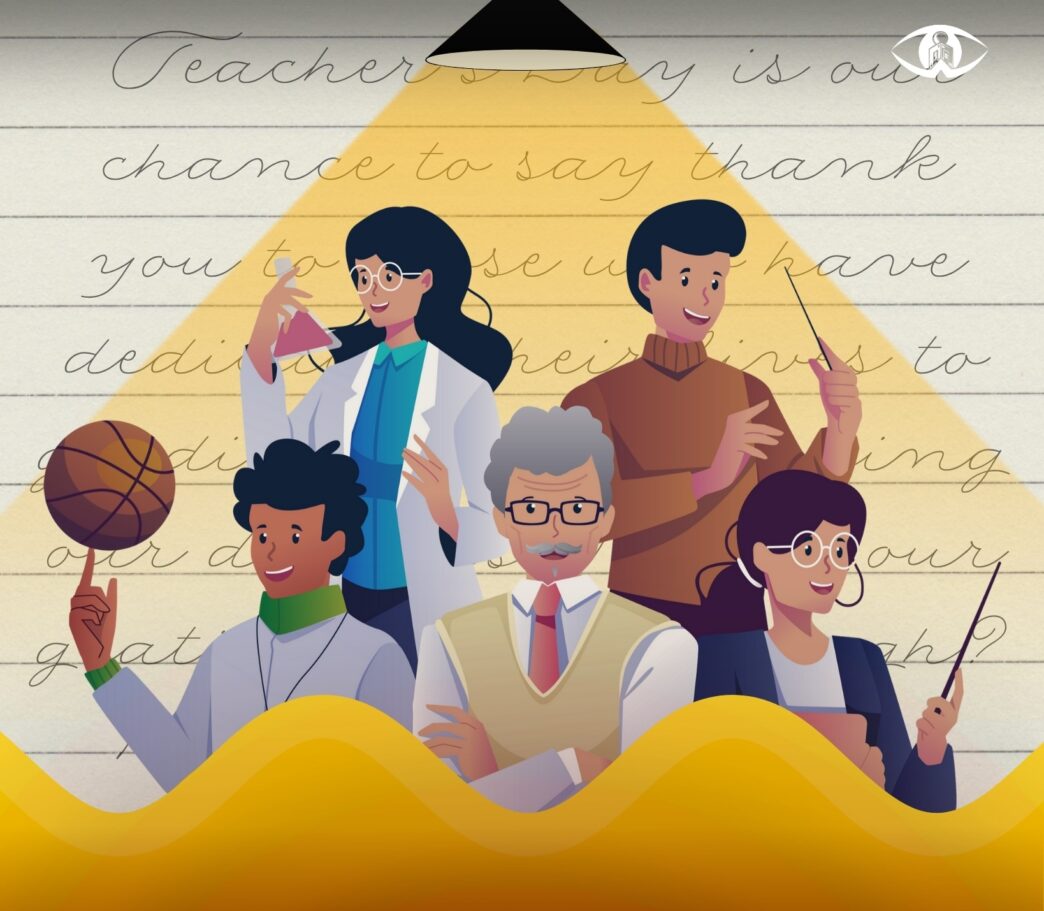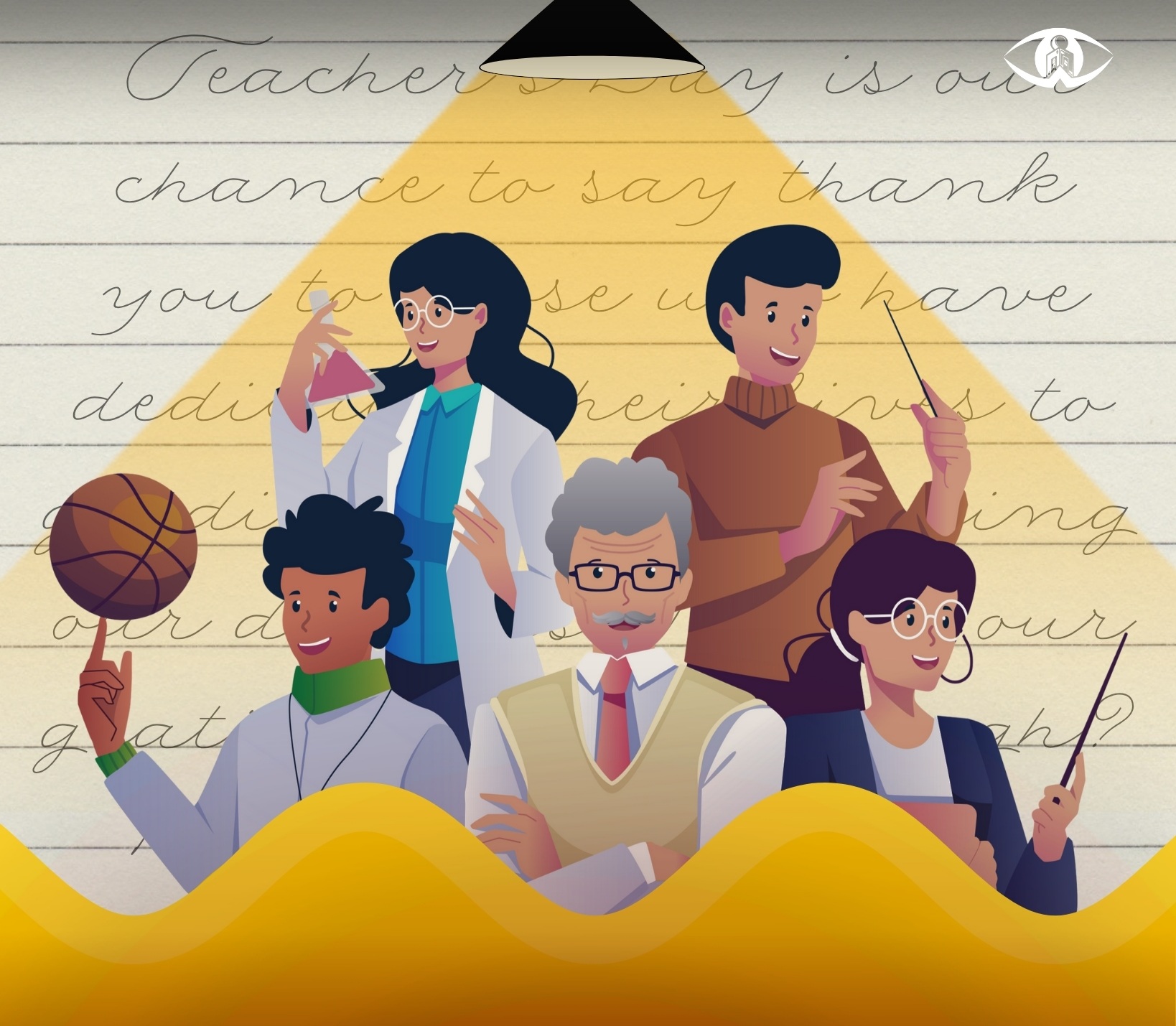By Ryanne Czarina Villegas
Every October, we all pause for a moment to celebrate the people who help shape and nurture who we are today. The people who were there when we first learned to write our own names, when we struggled with fractions, and when we doubted our own potential. The ones in charge of preparing future generations.
Teacher’s Day is our chance to say thank you to those who have dedicated their lives to guiding us in reaching our dreams. But is our gratitude even enough? Beyond the flowers, tokens, and heartfelt messages, it’s also a time to reflect on a truth we often overlook: teachers are among the most undervalued members of our society.
Teachers have always carried more than their share of responsibility. They are mentors, counselors, disciplinarians, and role models. Those who guide the innovators and changemakers of tomorrow.
Yet, for all the weight they bear, the recognition and compensation they receive often fall short. Yes, there are other benefits and incentives, but sometimes even that takes fighting tooth and nail for.
Many teachers work with limited resources—outdated materials, overcrowded classrooms, and at times, salaries that barely sustain their own families. Some spend out of their own pocket to make lessons just a little more interesting. Some have to travel far and through difficult terrains just to reach their students. Some come to work disregarding their own health. And still, they show up every day, with patience and purpose.
Being a teacher takes a lot of guts, passion, commitment, and perseverance. Because even after the school bell rings, their day doesn’t end. Papers need checking, reports need filing, and lesson plans need refining. On top of these, they also have to manage the emotional labor of handling different types of students each day.
They take such time and effort curating their days to the needs of their students, just to be able to give them the education they deserve. Their commitment endures—sometimes just sustained by the quiet satisfaction of seeing their students learn, grow, and eventually succeed. Becoming a famous actor, a sought-after architect, a trusted doctor, or a successful journalist.
Behind every achievement is a teacher who once believed in someone’s potential, nurtured it, and let it grow. Each success story carries traces of chalk dust, handwritten notes, and the tireless effort of someone who devoted their life to teaching.
Their role, essentially shaping the nation’s future, is too often met with modest paychecks and immense workloads. In a society that constantly emphasizes education as the key to progress, the very people who make that education possible remain among the most undervalued.
Public school teachers in the Philippines earn significantly more than their counterparts in private institutions, yet both groups remain undervalued when measured against the nation’s rising cost of living. Under the current Salary Standardization Law, an entry-level public school teacher (Teacher I) earns around ₱27,000 to ₱30,000 per month, while senior positions such as Master Teacher I can reach about ₱46,700 monthly.
In contrast, over 60-percent of private school teachers reportedly earn less than the entry-level salary in public schools, according to a 2023 survey by the Alliance of Concerned Teachers–Private Schools. About one in four private school educators even receive pay below the minimum wage in Metro Manila, which stands at around ₱620 per day.
The wage disparity reflects a deeper imbalance in how society values teachers across different sectors. While public school teachers face mounting administrative tasks and often spend their own money for classroom materials, private school teachers struggle to make ends meet despite similar workloads and expectations.
Only about 20-percent of private educators earn what is considered a “family living wage” of roughly ₱35,000 per month, leaving many to juggle multiple jobs just to stay afloat. Both sectors share a common plight: long hours, limited resources, and compensation that fails to match the magnitude of their role in shaping the nation’s future.
The issue reflects a broader truth about how society views its educators. Amid discussions about social equity and economic reform, the plight of teachers also deserves a central place in the conversation. Fair wages, accessible training, and improved working conditions are not luxuries—they are necessities if education is to remain the backbone of national development.
Teacher’s Day serves as a gentle reminder of their impact. But for most teachers, it is back to work the next day—marking papers, attending meetings, and preparing for another week of lessons. There are no grand rewards, only the quiet pride of watching their students grow.
Perhaps that is the truest measure of their strength. In a world that often overlooks them, teachers continue to build futures from the ground up, one child at a time. Their legacy may not be carved in monuments or printed in headlines, but it lives in every mind they’ve touched and every dream they’ve helped nurture.
Happy Teacher’s Day to the nation’s silent heroes. Steadfast, selfless, and truly irreplaceable. Thank you for your unwavering dedication and the hope you plant in every heart you teach.














